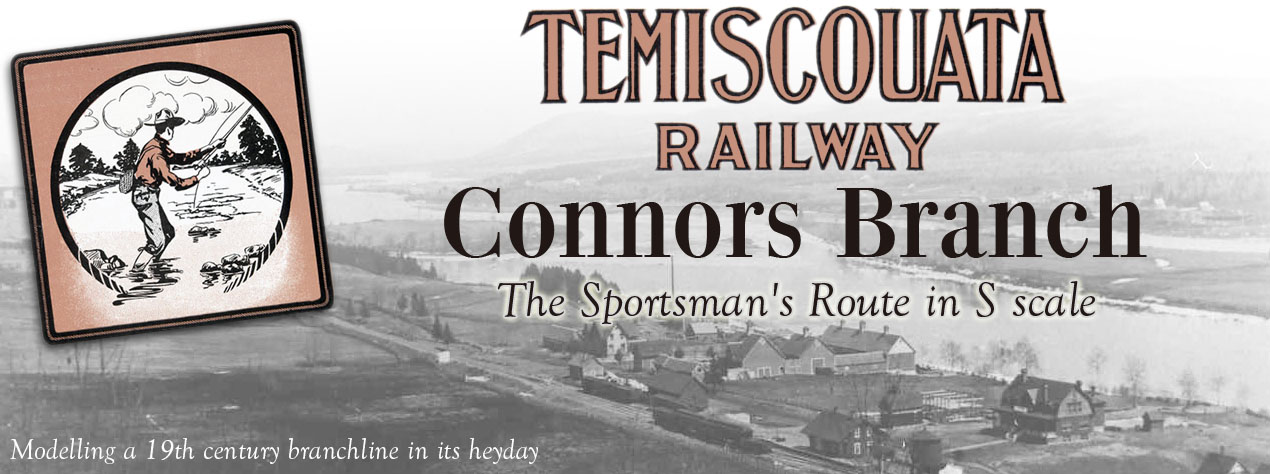While the
long due renovation of my house are underway, I’m still giving some thoughts
about the Connors layout, mainly due to Jamie Bothwell who prepared some elements for the layout. To be honest, I’ve never seen this project as something that had to
be done as fast as possible, but rather as something well worth taking time to
do things right and progress.
Over the
last few weeks, I’ve been revisiting my original design set in the 1910s and
looked at what could be done for something set in the post-1930 era. A lot of
data from that era exist, making it easier to figure out how trains were
handled by Temiscouata Railway.
So, for
this reason, I decided to put together a more modern version of the terminal
before it was abandoned. The biggest changes at that time were the MoW track
that was moved in front of the station while the second turnout on the team
track siding was simply removed. These changes don’t impact that much the
operation process at Connors, but they do show the railway tried to eliminate
useless elements to streamline as much as possible the terminal. To be honest,
it is rather efficient and from a layout perspective, makes things much easier
to handle. As a layout building, I must admit I'm kind of impressed by elegant simplicity of this track plan.
At the end
of the day, I must admit I am still lingering asking myself which era suits my
needs best. Not an easy answer, but at this point, it is all about conveys the
sense of the place. To me, Temiscouata is all about small time railroading,
light weight rails, tall grass and serene countryside. Backwood location,
retreating agriculture and hard working men struggling to keep a failing yet
proud enterprise all speak to me. This is probably due to my own personal
background being raised at the fringe of a dying colonization village.
That said,
focussing the project on the ambiance rather than the train themselves (and no,
it doesn’t mean neglecting that aspect at all) helps me to set the priorities
on the project. Particularly in terms of motive power, which is always the
worst “I want it all” situation we must face. As things stand if a post-1930s scenario
is adopted, only one locomotive would be required to operate the layout, namely
an ex-Quebec Central 4-4-0. Less is more they say, and it seems to me having
one loco is a good way to cherish, maintain, detail and care about it. A personal
association is created with this little working horse. And at the end of the
day, it helps to keep the project affordable and manageable. And let's be honest, given this locomotive will be probably built almost from scratch, it will far less intimidating!


As with the real railways, only having one engine can be a problem if it breaks down! :)
ReplyDeleteBut there is no reason why you cannot faithfully set the layout in a certain era with a set of stock to suit, and gave another set(s) for (an)other period(s), given time.
Worth considering something as a backup, such as a 44 tonner or 70 tonner, just for testing and so forth. And for fun!
Simon
You've got great insight Simon. When CNR terminated steam power over the Connors Branch, GE 40-ton took over for the few remaining years. It certainly is always a good idea to have a B option just in case. It could also be quite practical since building an entire steam locomotive from scratch won't happen on short term basis.
Delete